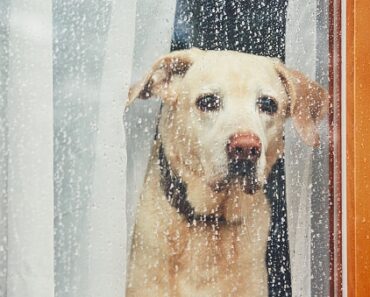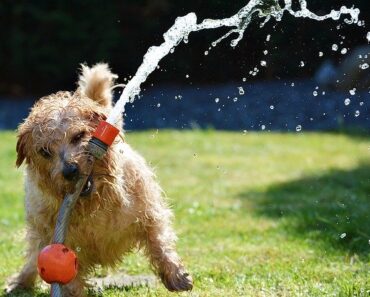
Animals have been flying since the early 1930s. It is the safest and most suitable way for them over long distances. However, the journey of our four-legged friends is not something to be taken lightly. Being sentient beings in their own right, they can in no way be treated like ordinary freight. Each company has specific procedures regarding the acceptance, handling and delivery of your pet. The natural needs of the animals are taken very seriously at every stage of the journey. Depending on the airline and the country, you can either hire someone to transport your little protégé in a cage or carry it yourself. Ask your airline for more information.
In the cabin or in the hold?
Transport rules vary according to the country of departure and the country of destination. In any case, only cats and small dogs are accepted in the cabin (in a crate or kennel). Some airlines will even go so far as to refuse them all. This should in no way worry you because, contrary to popular belief, being placed in the hold is more reassuring for our faithful canine and feline companions. The latter appreciate this place more because it is calmer and its darkness allows them to rest. It is obviously a ventilated and heated place especially for them.
N.B.: Some destination countries do not accept animals on commercial routes, so you will have to put them on a cargo plane.
In the vast majority of cases, a transport basket or cage can only accommodate one individual at a time. However, there is one exception. Thus, you will be able to accommodate in the same kennel up to two puppies or kittens, aged between eight weeks and six months, of comparable size and weighing a maximum of nine kilos each.
Please note: the hot weather flights of certain snub-nosed dogs and cats such as boxer dogs, pugs, bulldogs, pekingese and shih tsu or Persian cats and burmeses are not recommended. These species have difficulty in maintaining a normal body temperature during periods of high temperatures.
Some instructions to be respected before leaving
Buy a shipping crate that is neither too small nor too large. A dog or cat crate that is too large could injure the dog or cat in case of turbulence during the flight.
Taking your doggie or tomcat out of his natural environment is a source of stress for him. This is why, even more than for car trips, it is important that he familiarizes himself with his shelter a few weeks or months before the day of departure. So don’t hesitate to buy your kennel or travel cage well in advance: many cheap models are on sale at Zoomalia. The animals will be particularly good in the air if they have been accustomed to this new little house beforehand. However, this is a precaution that many owners forget to take.
The day before departure, give them less food than usual but enough water. On the other hand, a light meal two hours before handing it over to the person in charge will soothe them and is even mandatory in some countries, such as the United States. We advise you to buy light kibbles for dogs or cats, available at low prices on our website.
Never administer sedatives or tranquilizers because of the potential side effects during the flight. This long-standing IATA recommendation is approved by many veterinary associations.
If you have a dog, walk it before taking it to the airport and again before check-in.
Finally, most airlines require a health certificate for your dog or cat. This is issued by your veterinarian and must state that your dog or cat is in good health, with all its vaccinations up to date, and fit to fly.
When buying your cat or dog carrier, think about IATA standards!
Not all baskets will do, so don’t buy the first one you see. In the cabin, your hairball must be placed in a crate or carrier bag that fits perfectly under the seat in front of you. Make sure well in advance that your dog or cat is allowed in the cabin and that it is on the same flight as you!
On the other hand, if your loulou cannot stay at your side, it will have to be placed in the hold in an IATA-approved crate, which meets very strict specific standards. So buy a safety cage that respects the following rules:
- The shell of the travel crate must be either made of fiberglass or rigid plastic.
- Any cage with a metal grid is prohibited.
- The crate must not be able to roll. It must therefore be either without wheels, or with removable wheels (remove them) or blockable (block them with adhesive tape).
- The door must obligatorily have a central locking system that simultaneously locks the two locking points located at the top and bottom of the door.
- The mechanism for locking and unlocking the body shall operate without keys or tools.
- Door hinges shall extend at least 1.6 cm beyond the horizontal edge above and below the door.
- Both parts of the door must be secured with bolts. Any other lateral closing system is strictly prohibited.
- The animal must be able to stand with its head fully erect without touching the top of the body. In addition, the animal must be able to turn around and lie down along its entire length.
If all these conditions are not met, your companion will most likely be refused boarding.
Some precautions during the trip
Plan to purchase a harness or leash because at most airports, security personnel will ask that Felix or Medor be removed from his crate to be x-rayed. You will find many of them for sale at discount prices on our site.
In the cabin, never take him out of his kennel or cage, so make sure it is properly closed.
If the animal is being transported in the hold, attach a label to the kennel containing the words “LIVING ANIMAL” written in large letters, information about the flight, its destination, the name of the contact person on arrival, important information as well as any special instructions for the handlers. Also make sure your pet is wearing a collar with identification in case it is lost.
Once on board, it is imperative that you inform the captain and his crew that you have a live animal in the hold and ask them to confirm that it has been loaded. Make sure it is in a well-ventilated area, at the right temperature, with no dangerous substances, especially if the aircraft has ventilation problems or has been on the runway for too long.
Finally, insist on recovering it as soon as possible, as soon as you arrive at your destination. If your aircraft is not direct, absolutely ask to check its condition during the transfer. If the transfer is very long, ask for it and give it a drink before you board. If it is a dog, take it for a walk.






